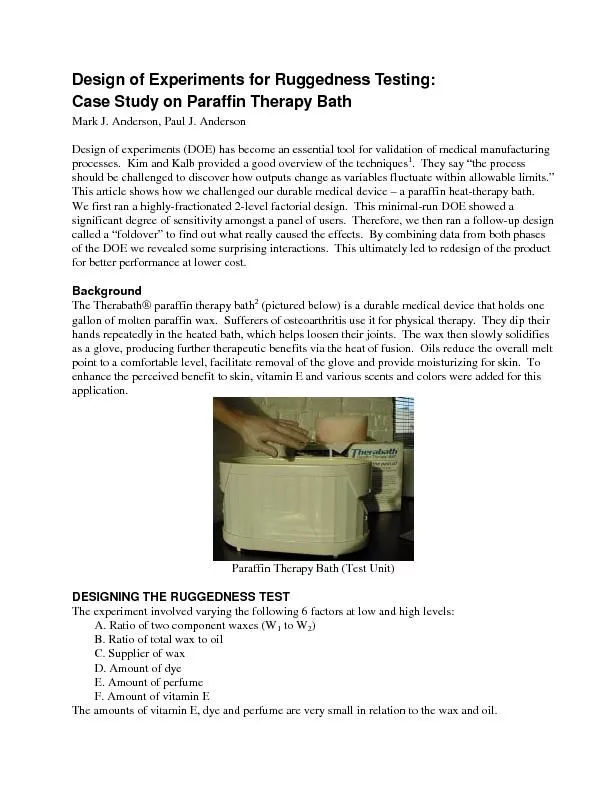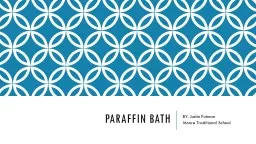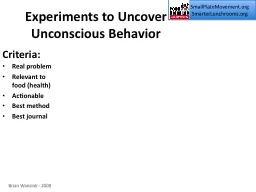PDF-Design of Experiments for Ruggedness Testing:Case Study on Paraffin Th
Author : phoebe-click | Published Date : 2016-07-26
Paraffin Therapy Bath Test UnitThe experiment involved varying the following 6 factors at low and high levelsA Ratio of two component waxes WB Ratio of total wax
Presentation Embed Code
Download Presentation
Download Presentation The PPT/PDF document "Design of Experiments for Ruggedness Tes..." is the property of its rightful owner. Permission is granted to download and print the materials on this website for personal, non-commercial use only, and to display it on your personal computer provided you do not modify the materials and that you retain all copyright notices contained in the materials. By downloading content from our website, you accept the terms of this agreement.
Design of Experiments for Ruggedness Testing:Case Study on Paraffin Th: Transcript
Download Rules Of Document
"Design of Experiments for Ruggedness Testing:Case Study on Paraffin Th"The content belongs to its owner. You may download and print it for personal use, without modification, and keep all copyright notices. By downloading, you agree to these terms.
Related Documents














